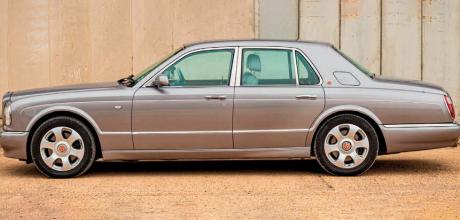2000 Bentley Arnage Red Label
Jonathan Gould tried other luxurious super-saloons and even a younger Bentley before finding what he was looking for – the Arnage Red Label. So what makes it so special?
WORDS: NIGEL BOOTHMAN
PHOTOS: GREGORY OWAIN
SPECIAL BREW
The real life story of trying, buying and owning a Bentley Arnage Red Label

BUYING A BENTLEY ARNAGE £158,500 NEW BUT LESS THAN A TENTH OF THAT NOW
I’m listening to Jonathan Gould tell his story about the search that led him to this Arnage Red Label, and it reminds me there are some things that buying guides can’t tell you. Most important of those, and most basic – will I like this car?
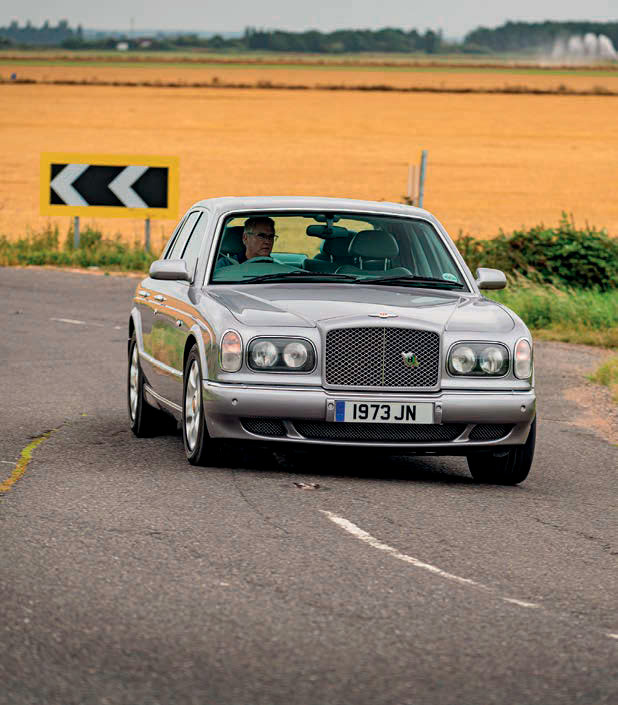
It’s a tricky issue. Not many people find themselves behind the wheel of other people’s luxury super-saloons, especially for a long enough drive to form an opinion. Sometimes a short test drive at a dealership, next to a chatty salesman, is not enough. Though I remember making my mind up about a previously much-admired Maserati Quattroporte V in a few minutes – marvellous engine, shame about the rest. But back to the point…it’s quite possible to get as far as buying a car before you really find out whether it’s for you. Jonathan had tried other Bentleys, including a 2004 Flying Spur, and he’d also experimented with a long-wheelbase AMG Mercedes-Benz S-Class, which he says surprised him by being a better car than the Spur. But even the S-Class was lacking something; something it’s quite hard to put your finger on. Perhaps the mass-produced origin of the Mercedes means it lacks a bit of charisma, no matter how beautifully built and well-engineered. But Jonathan isn’t really concerned with image, or how the car makes the driver look – it’s more about how the car makes the driver feel.
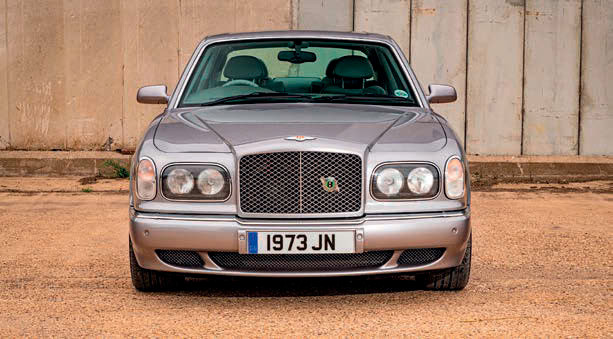
“The interior of the Flying Spur didn’t feel that special,” he says. “It wasn’t really an event to get into it and drive it. But with the Arnage, the very first time I sat behind the wheel I thought ‘this is what it’s about!’ And I still feel that today.” The Arnage had been on Jonathan’s radar for a little while by the autumn of 2017 and he looked at six or seven different examples.
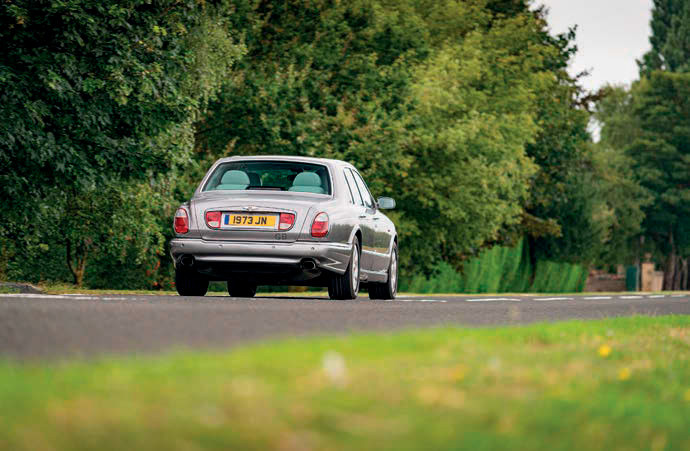
“I couldn’t find a facelifted one at less than £30,000,” he says, “so I was happy to settle for a well looked-after earlier model.”
In the end, Jonathan found three likely-looking cars to consider. One was Nightfire Red and another was British Racing Green, but the second was up in Blackpool and a long trip from Jonathan’s home in Deeping St James, near Peterborough. “The red one sold before I could get to it, but I later heard the owner spent £14,000 on it and put it up for sale again, so perhaps I dodged a bullet there,” says Jonathan. “That left a silver car with 73,000 miles at Vintage & Prestige, who were in Essex at that time. The previous owner was in his late 80s and the car seemed in nice condition. It was a year 2000 model, registered on September 1st that year.”
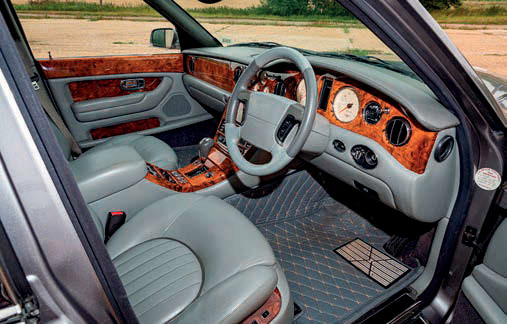
Jonathan arranged for the Arnage to go to Colbrooks at Stilton, outside Peterborough, for an inspection. They gave Jonathan a list of jobs the car needed, none of which was serious enough to deter him, though they added up to around £2500 – easily done with an Arnage, as we shall see.
“It’s massively important that any serious purchaser gets a full independent inspection of any car they are looking to buy,” says Jonathan. “The report is a great tool for them. I negotiated and got £1500 off the sale price, which was enough to cover the more important items. I ended up buying it in the week of my birthday that year, November 1st.”
The car Jonathan bought cost him a little more than a tenth of its original sale price. Sounds incredible when you look at our photos and see how little the car has altered over those years, but this handsome, potent car had depreciated by something approaching 90% from the £158,500 paid by the first owner. That first keeper sold it on after three years and it passed through only two more owners before finding Jonathan.
“It’s painted Silver Tempest and is trimmed in grey leather with no piping and no contrasting tone,” says Jonathan. “There is extra wood in the door cards and I think both these features were an option. There are also Jack Barclay kickplates, which some people seem to like.”
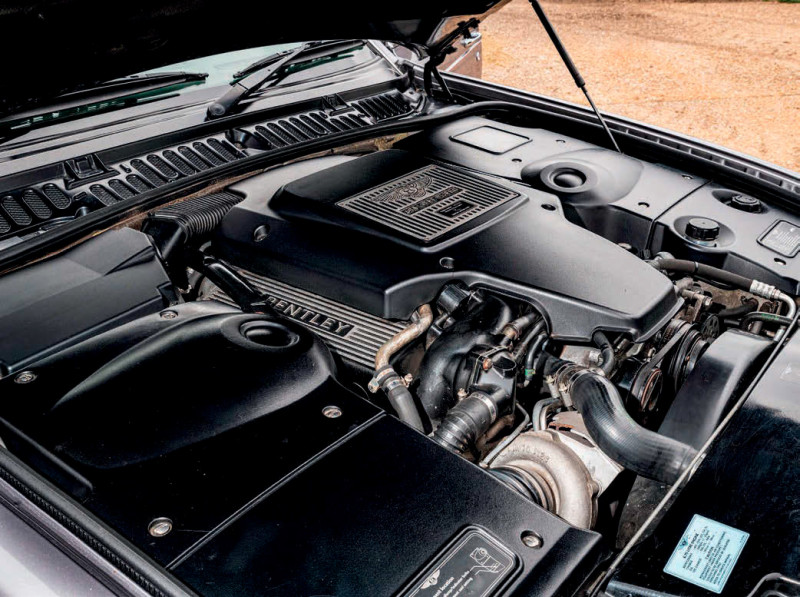
Very classy. But life with the Arnage was about to begin as it would go on: mostly deep satisfaction and joy from driving it, but with a few deep breaths when handing over the bank card.
“Colin at Colbrooks put a pair of new front discs on it and a new window cable, which produced a bill of £1146,” says Jonathan. “Then, at the end of that first month, the temperature gauge failed and we needed a new thermostat. That, plus new alarm remotes, came to another £942.”
THE COST OF LIVING
Jonathan has been very organised and perhaps also braver than most of us in recording exactly what he’s spent, and has analysed it over the years. “The next service, performed in 2019, was a big one and cost £1700. But it’s the incidental repairs that tend to add up, so in 2020 I had a bill for £2787 that included 17 hours of labour and a big parts list to replace the water pump, which is a major job on an Arnage.”
The car is serviced every year, even though annual use is usually no more than 3000 to 4000 miles. Beyond servicing, some of what you spend is down to discretion, though. What is your tolerance for niggling little faults that don’t stop you driving the car?

“One example is the passenger front door latch, which wasn’t working properly on my car,” says Jonathan. “It was £860, just for the latch, without labour charges! But the car gets whatever it needs – that’s been my approach.”
It’s an approach that’s led Jonathan to set his own budget of between £1000 and £1500 a year, plus £5000 in the bank as ‘just in case’ money. The judgement, or luck (or should we call it manmaths?) comes in admitting how often you dive into that spare £5000. After all, it’s a sum that would barely cover the job everyone seems to know about on the Arnage Red Label – the head gaskets. Depending who you ask, they fail any time after 40,000 miles, or between 60,000 and 80,000 miles, and you’ll need at least £5000 spare to have a specialist put them right. But like many notorious engine weak points (think of Porsche 911/996s with IMS bearing failures or BMW V10s that spin rod bearings) it’s probably something that gets repeated in the bar of the local pub because we like to scare each other, or at least because an expensive failure sticks in the mind when a tranquil period of regular use does not. “I think a lot of the problem – or lack of it – could be down to the user,” says Jonathan. “You should warm the car up patiently and only use the performance when it’s up to temperature. I try to avoid short trips and I don’t thrash it at any time. There’s no need, is there? It’s such an effortless car to drive; 75mph is only about 1200 or 1300 rpm. So perhaps the problem is blown a little out of proportion.”
SORTING OUT THE RANGE
We can get the expert’s view from Colbrooks R&B in our box-out over the page. But it’s also worth running through the Arnage’s model history to remind ourselves of perhaps three distinct phases in the car’s production: BMW engines, the first Red Labels and then the 2002-onwards cars, engineered under Volkswagen’s full control. First of all, Bentley launched the Arnage in 1998 with the twin-turbo 4.4-litre BMW V8 engine. It’s a little down on torque compared with the later cars, but the engines are bombproof. Then, from late 1999, the Arnage Red Label replaced it with the re-engineered incarnation of the famous old L-series V8, still at 6.75 litres but with a single immense turbocharger and a world-leading 835Nm of torque. The BMW-engined cars were sold off in parallel as the Arnage Green Label, plus a special edition called the Arnage 4.4l Birkin. The Red Label’s extra torque meant the re-introduction of the old General Motors four-speed automatic in place of the BMW five-speed auto transmission. In 2001 Bentley launched the Arnage LWB with a generous stretch of almost 10-inches divided between the front and rear doors. It was re-named Arnage RL from 2003. Before that, in 2002, the Arnage R replaced the Red Label and offered much re-engineering for improved handling balance, power and so forth, while a new performance variant, the Arnage T, came with 450bhp and even more torque than before.
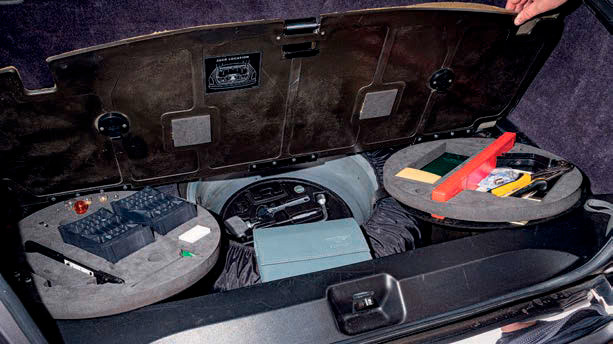
The facelift of 2005 introduced separate round headlamps, two per side, and brought the car’s look more in line with the new Continental GT. Both the Arnage R and T models gained a valuable engine upgrade in 2007 with roller rockers for camshaft operation, which seems to have alleviated a camshaft wear problem now known to afflict the 2002-2006 cars.
The 2009 model year saw the last Arnages, including a run of 150 Final Series special editions, by now producing an extraordinary 500bhp and 1000Nm of torque. The Arnage was replaced by the Mulsanne from March 2010, which extracted even more life out of the old L-series V8, now given an extensive 21st-century makeover with variable cam phasing and cylinder shutdown. But that’s for another day. Or is it? Jonathan has admitted that after five years, he is contemplating selling the Arnage for an example of its successor. But only contemplating, mind you.
“I’ve had a Shadow II and a couple of Silver Spirits, but I didn’t keep them for all that long. With the Arnage, whenever I drive it, I don’t want to sell it any more. There are lots of reasons, beyond how special it makes you feel. It was the last one designed under Vickers’ ownership, even though the Red Label was created because VW took control. Also, my dad loves them, which makes a difference – whenever he saw one, he would say ‘now there’s something a bit special,’ and it’s stuck with me.”
There’s that word again: special. For Jonathan, the Arnage feels like a handbuilt car should feel, and in his own words, ‘“it’s the epitome of what a Bentley should be.” So if you’re thinking of buying one, and you’re not sure you’ll like it, you won’t find a stronger recommendation than that.
Above: Everything you need, hidden away under the boot floor. Below: The view most of us will get – an Arnage thundering past into the distance.
Below: The proportions still look great, don't they? Jonathan (below right) and the Arnage have been together for five years and their relationship has continued to blossom.
Above: The ultimate mancave? Display boards came from the local Bentley dealer, courtesy of Colbrooks.
Above: One monster turbo – one powerful engine. Below: Jonathan's history file is obsessively complete.
Above: When it comes to road presence, the Arnage has few equals. Below: It may be large, but Arnage still corners with real poise..
THE FACTS
- MODEL 2000 Bentley Arnage Red Label
- LENGTH 5389mm
- WIDTH 1930mm
- WEIGHT 2520kg
- ENGINE 6.75-litre ohv V8 turbo
- MAX POWER 400bhp @ 4000rpm
- MAX TORQUE 616lb ft @ 2500rpm
- ACCELERATION 0-60MPH 6.3 seconds
- TOP SPEED 155mph
- COST NEW £158,500
LIVING WITH AN ARNAGE – A SPECIALISTS VIEW
Jonathan Gould has his car looked after by Colbrook R&B in Stilton, near Peterborough. We spoke to Richard Meadows, the ‘R’ in R&B, and asked him for his view on running an Arnage.
“The BMW engine is the most reliable, and though it was criticised for being underpowered we’ve always thought it performs perfectly well. But these cars are now more than 20 years old and Arnages were not undersealed, so rust can be an issue. Cosmetic problems like bubbling wheel arches can become a problem but we find it’s mainly what’s underneath – hydraulic lines, brake pipes and fuel lines all corrode. The frequency of the head gasket issue on Red Label cars is difficult to assess…
we only do about three a year, and we look after plenty of Arnages, but many cars don’t do much mileage. One thing we’ve noticed is that when sending radiators for a check-over during a head gasket repair, they can be 60% down on flow. I’ve got no proof, but furred-up radiators may contribute to the problem, so getting it re-cored even if the car has not yet developed head gasket issues could be wise. The issue of camshaft failures on later R&T models is something we haven’t seen for years and my guess is that any cars that were going to fail have failed by now, but you might get caught out with a very low mileage example. A bigger concern on the Arnage R&T is engine warning lights, which can be caused by splits in air injection pipes or a failed pump on the back of the gearbox; it’s all time consuming to track down and expensive to fix.
Otherwise, it’s just minor annoyances like failing electric window mechanisms, but remember Arnage parts are always expensive. We try to work out a service schedule that suits the owner’s mileage, so we might do one item from a major service in one year, another the following year. You should budget a minimum of £1500 a year to look after one, but Jonathan’s idea of having a few thousand spare – just in case – is quite wise!’


